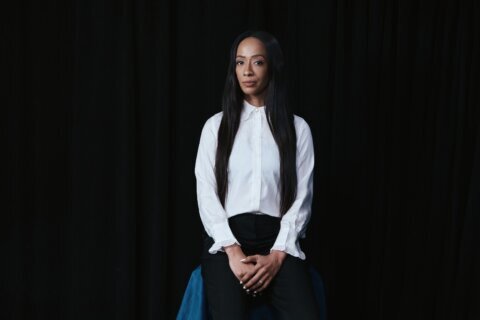The following piece is spoiler free, mentioning only elements found in the trailers.
It’s the day that superhero fans have been waiting for: “Justice” has been served.
“Zack Snyder’s Justice League” hits HBO Max in all its four-hour glory Thursday, and “Release the Snyder Cut” author Sean O’Connell has already seen it five times.
“It’s such a tremendous adaptation,” O’Connell told WTOP. “People might say to themselves, ‘Wait, I’ve seen this movie already.’ In a way you have, but not really.”
In case you’ve been living under a rock of Kryptonite, this is a mulligan from 2017.
“Back in 2017, Zack Snyder had a ‘Justice League’ movie that was supposed to be a sequel to his ‘Batman vs. Superman’ film,” O’Connell said. “We were going to get full introductions to The Flash, Aquaman and Cyborg. They were going to join Wonder Woman and Batman in a team film that was being put together by Zack Snyder.”
However, Snyder left the production when his daughter committed suicide, giving the studio an excuse to change course after the critically panned “Batman v. Superman.”
“Warner Bros. used that as an opportunity to shift gears on the franchise from this dark, serious tone to a lighter, audience-friendly, humorous mode that Marvel was doing,” O’Connell said. “They hired Joss Whedon, who directed two Avengers films.”
Turns out, you can’t simply jam a Marvel peg into a DC hole.
“You can’t squeeze the Justice League heroes into the Marvel model,” O’Connell said. “They made Batman sarcastic and funny; he’s not a funny hero, he’s a tragic hero. They made Flash a coward and completely ripped away the backstory for Cyborg.”
Ultimately, less than 20% of the theatrical footage was directed by Snyder.
“It was such a drastic difference in tone that the movie that landed in theaters wasn’t the movie fans were anticipating, so it bombed all the way around,” O’Connell said. “Snyder’s most passionate fans believed that their original director had a version of the movie that he was sitting on, so they fought for three years to get his true version.”
That fight began the night that “Justice League” hit theaters.
“Literally the first day that the ‘Justice League’ theatrical movie screened, Zack’s fans knew it wasn’t his movie because they’d seen trailers and watched making-of clips,” O’Connell said. “You could tell the difference in the footage, you could tell how badly it was altered, so they went on social media starting that night on Nov. 17, 2017.”
Thus, the hashtag #ReleaseTheSnyderCut was born.
“One of the fans just casually, jokingly dropped #ReleaseTheSnyderCut,” O’Connell said. “Without even realizing it, they gave themselves one of the best marketing slogans that I’ve seen in all of my years in covering the entertainment industry.”
Comic-book fans cheered a successful mutiny to overthrow a major Hollywood studio.
“It was a remarkable story about how fans persistently lobbied for a version of a movie they wanted to see and used social media to their advantage with this crazy hashtag in order to have their voices heard by a studio and have a major Hollywood studio reverse course and give them the version they didn’t want to release,” O’Connell said.
On the flip side, the Snyder Cut sparked concerns by cinema purists about the future of the industry. Unlike director’s cuts of Ridley Scott’s “Blade Runner” or Francis Ford Coppola’s “Apocalypse Now,” they fear it’s reverse-engineered to appease “fanboys.”
“I do understand both sides of it,” O’Connell said. “I don’t think they are setting any precedent because the situation surrounding this is so unique that you would need so many things to line up for it to ever happen again. … ‘Star Wars’ fans who want to see the Phil Lord and Chris Miller version of ‘Solo,’ that’s never going to happen.”
Indeed, “Justice League” is a special case, benefitting from a confluence of events.
“The one thing that really swung the Snyder Cut fight in their favor is the fact that we now have these streaming services that didn’t exist years ago,” O’Connell said. “It’s easier for you to put a 4-hour version of a director’s cut on a streaming service…HBO Max is able to say to him, ‘Sure, throw everything in. Give us the kitchen sink version.”
The result is an epic four-hour movie at 242 minutes, longer than “Lawrence of Arabia,” “Gone with the Wind” and “The Godfather,” divided into six chapters, plus an epilogue.
“He found really good places to put breaks in the action,” O’Connell said. “It’s as if you got a fast-food meal the first time through, but this time you’re getting a full five-course entrée and dessert. You understand it’s following the same beats of the 2017 cut, but at four hours, it’s allowed to breathe, grow and evolve in ways that are organic.”
If you need a refresher, the plot picks up after Superman’s sacrifice as Batman and Wonder Woman recruit a team of metahumans to protect the world from a catastrophe.
“It restores the legacy and the honor of the characters,” O’Connell said. “It fleshes out their backstories and gives them motivations. [We get] a lot more with Flash, which is fantastic; a great exploration of who Cyborg is; and some really cool stuff with both Wonder Woman and Aquaman that are good counterparts to their solo movies.”
Likewise, we get a much deeper dive into the villain.
“They do a lot more to connect Steppenwolf back to his native planet, Apokolips, that’s ruled over by Darkseid,” O’Connell said. “You might say, ‘That’s just Thanos for the DC Universe.’ They are similar but completely different. If you’re a DC fanatic, you get a lot more Darkseid in this movie than I anticipated, and that’s all I’m gonna say.”
Will the franchise embrace Snyder’s vision as canon for future installments?
“Going forward, if Zack is able to continue his vision and tell more stories in this universe, the best place for him to do it is HBO Max,” O’Connell said. “Some are worried what it will do to the theatrical model…but for creators, it’s really exciting. It’s giving them a lot of freedom to paint with the brushes that they want.”
Listen to our full conversation.







